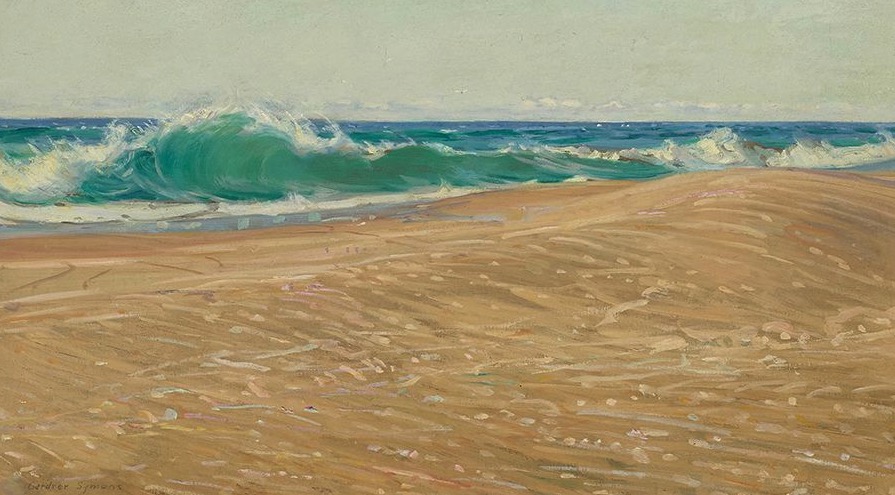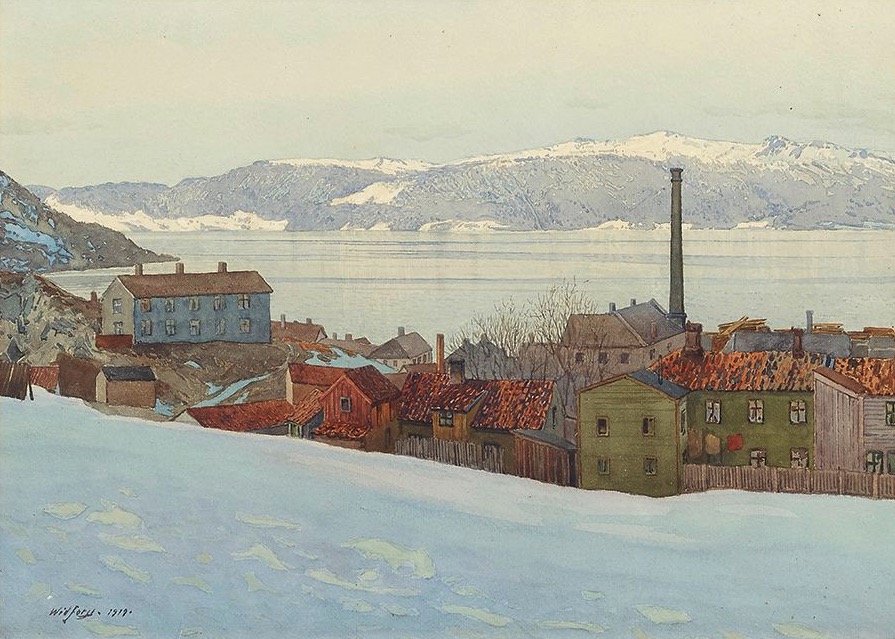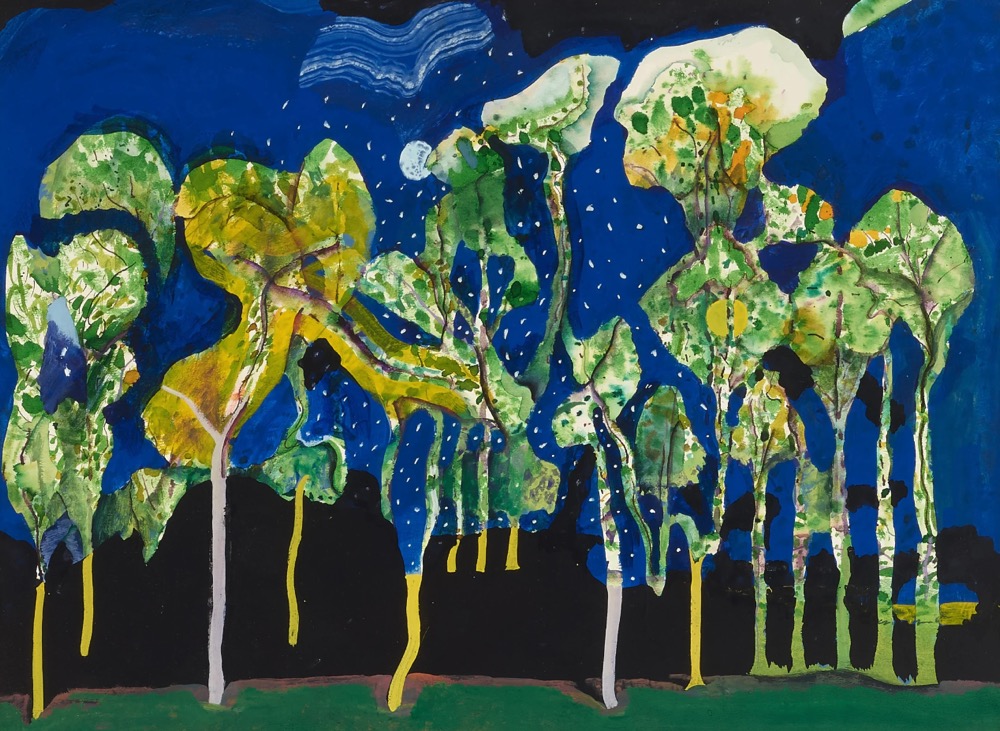Taking place on 7 February in Los Angeles, Coast to Coast is a unique auction featuring examples of American, California and Western paintings, works on paper and sculpture—as well as fine European, modern and contemporary works from the esteemed collection of Gail Feingarten Oppenheimer.
Here, our specialists choose their favorite lots coming under the hammer at accessible price points for every collector.
Lot 1 George Gardner Symons, Aliso Dunes, Pacific Coast

The movie The Fabelmans ends with a scene in which movie director John Ford is espousing the benefits of a high or low horizon line in film shots to a fictionalized young Steven Spielberg. The same can often be said for paintings, which is why I was immediately drawn to this seemingly simple composition by George Gardner Symons.
The scene may be just sand and water but, by raising the horizon line close to the top of the canvas, it becomes a far more interesting painting. Symons swirls the sand in all directions to give it movement, texture and dimension. The wind is accurately catching the tips of the breaking waves as the light illuminates the foam. In the distance is the deep blue sea, calm but endless. There is depth to the scene that might otherwise be lost. Anyone that loves trapesing across the sand towards a beach will appreciate how accurate this scene is and how inviting, albeit simple, this moment can be.
Lot 153 Fred Harman, Red Ryder and Little Beaver

Jean Shepherd’s A Christmas Story is a childhood movie favorite of mine. So I was excited to see this depiction of Fred Harman’s Red Ryder and Little Beaver characters—who feature so heavily in the movie—galloping across a Western farm landscape.
Harman and his producer-partner Stephen Slesinger were licensing and marketing trailblazers for their Red Ryder creation. A comic strip ran in national newspapers each Sunday from 1938–65, while they also produced Red Ryder-themed comic books, radio series, films, and, of course, licensed the name to product merchandising like the Daisy Red Ryder Carbine air rifle BB gun in A Christmas Story. Having found financial and commercial success, Harman was able to devote himself to painting Western subjects, returning often to his popular Red Ryder characters, and was a founding member of the Cowboy Artists of America.
Lot 50 Gunnar Widforss, From Troundjeim (sic) Norway

While Gunnar Widforss is best known for his depictions of National Parks like Yosemite and the Grand Canyon, From Trondhjem offers a glimpse at his Scandinavian roots. The present work was painted two years before his extensive travels out west. In contrast to his typical red rocks and granite peaks, Widforss uses pale blues to capture the soft Nordic light of the of the fjord-side city. He breaks up the wintery composition with colorful buildings anchoring the middle ground. A smokestack rises from the skyline like a church steeple—offering the promise of warmth during the long winter.
Lot 189 Aaron Gunn Pyle, Harvest Scene

This Aaron Gunn Pyle work comes from The Collection of Gail Feingarten Oppenheimer, who was a dealer, collectors and patron of the arts. Her personal style was eclectic and ranged from Classicism and Impressionism to Regionalism.
From the colors to the subject matter, Pyle’s work is indebted to his training with Missouri painter Thomas Hart Benton, who often combined Modernist and Realist elements. Beyond his influence from Benton, Pyle’s family owned 128 acres of farmland—the chores and daily tasks associated with tending land often feature in his works. Harvest Scene is no exception—two figures appear hard at work set against the backdrop of an earthy palette. To the left of the composition, we see the harvesting efforts the figures have already completed, but there is still much work to do.
Lot 208 Arthur Okamura, Greengrove

Our auction is distinguished with a collection of contemporary works by Arthur Okamura. Gail Feingarten Oppenheimer represented Okamura through Feingarten Galleries for nearly twenty years; she and her late husband Charles were his longest dealers, and their partnership with M. Knoedler & Co. helped to promote Okamura’s work on the East coast. One such work is Greengrove, a lively and layered interpretation of nightfall.
Okamura was skilled in a variety of print and mixed media. He was a native Californian, but like many Japanese-American artists of his time, he endured internment at the Santa Anita Race Track in California and Granada Relocation Center in Colorado. Okamura trained at the Art Institute of Chicago, Yale School of Art and University of Chicago, and developed an Expressionist approach to landscape and still lifes. He was a follower of the Zen Buddhist Shunryu Suzuki Roshi (1904-1971) and deeply connected to the San Francisco poetry renaissance associated with the San Francisco Zen Center.
Okamura worked prolifically during his Feingarten years. His practice evolved into teaching, and he had a distinguished career at the California College of Arts and Crafts (now CCA) for over 30 years.











































